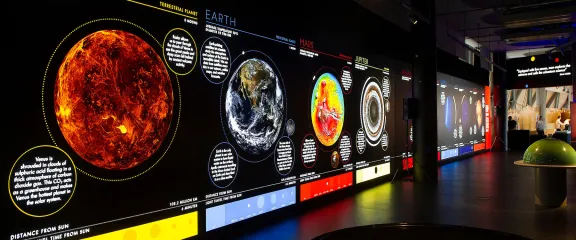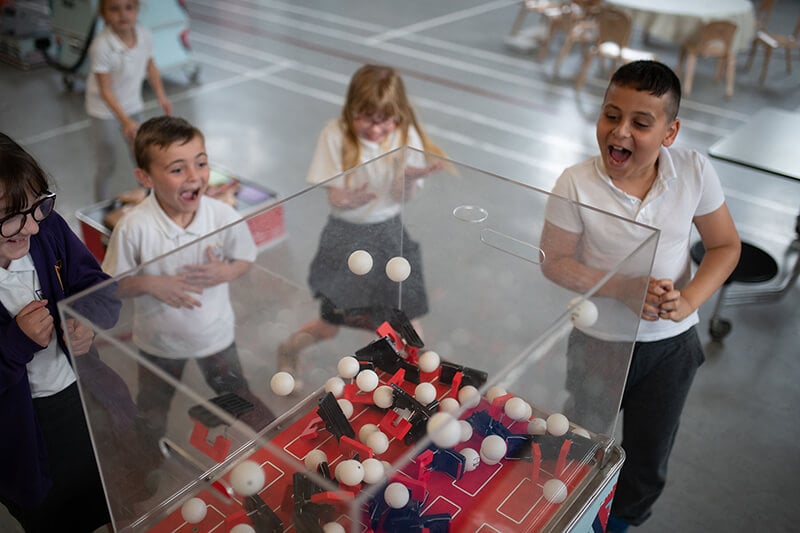Goldilocks Planets
The planet wall shows all the planets and their known moons (white circles) and orbital path (dotted line), including Mars, Earth and Saturn.

Earth is the only planet in our solar system to have liquid water on the surface. Surface water evaporates into our atmosphere and condenses to form clouds. Liquid water means life can exist on Earth. Planets that are closer to the Sun (e.g. Mercury) are too hot for liquid water to exist (water boils at 100°C) and planets that are too far away from the Sun (e.g. Saturn) are too cold for liquid water to exist (water freezes at 0°C).
Exploration Questions
Ask pupils the following questions as they explore the exhibit:
- How do you think being close to the Sun affects Mercury?
Answer: It has a very high surface temperature (highs of 430°C).
- Which planet has the most known moons?
Answer: Saturn with 274 moons.
- Which planet is the largest?
Answer: Jupiter, 11 times wider than Earth.
- What do you think makes Earth different from all the other planets in the solar system?
Example answer: Earth has liquid water on its surface, which can support life.
- Which planet would you like to visit and why?
Explore answers from pupils


